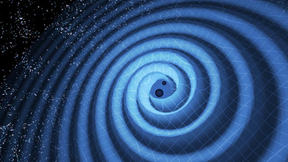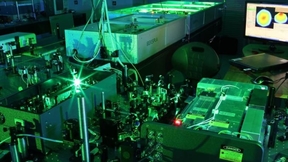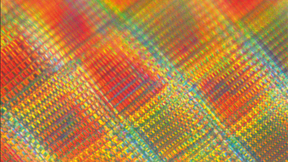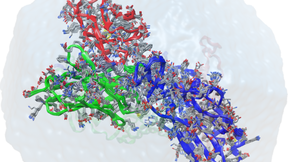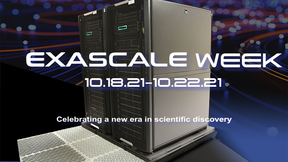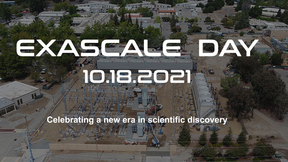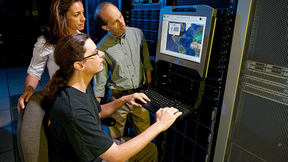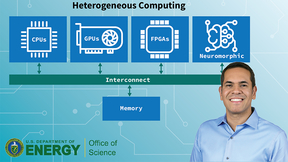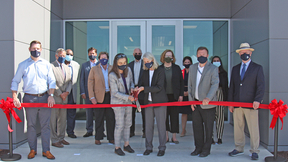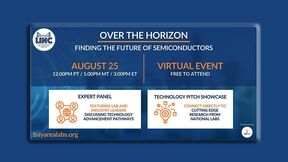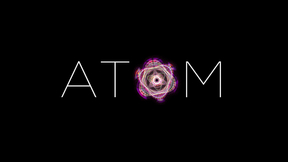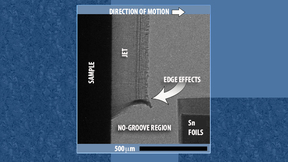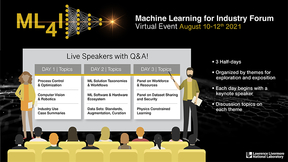Back
The scientific computing and networking leadership of the U.S. Department of Energy’s (DOE’s) national laboratories will be on display at SC21, the International Conference for High-Performance Computing, Networking, Storage and Analysis. The conference takes place Nov. 14-19 in St. Louis via a combination of on-site and online resources. The theme of this year’s…
The announcement that the Laser Interferometer Gravitational-wave Observatory (LIGO) had detected gravitational waves during the merger of two black holes sent ripples throughout the scientific community in 2016. The earthshaking news not only confirmed one of Albert Einstein’s key predictions in his general theory of relativity, but also opened a door to a better…
Lawrence Livermore National Laboratory (LLNL) scientists and engineers have collected three awards among the top 100 industrial inventions worldwide. The trade journal R&D World Magazine announced the winners of the awards, often called the “Oscars of invention,” during a three-day virtual ceremony — Oct. 19-21 — and on the magazine’s website. With this year’s results,…
Similar to grass stems, Lawrence Livermore National Laboratory (LLNL) scientists have created nanostrut-connected tube-in-tubes that enable stronger low-density structural materials. Porous materials with engineered stretching-dominated lattice designs, which offer attractive mechanical properties with ultra-light weight and large surface area for wide-ranging applications…
Lawrence Livermore National Laboratory (LLNL) has joined the international Human Vaccines Project (HVP), bringing Lab expertise and computing resources to the consortium to aid development of a universal coronavirus vaccine and improve understanding of immune response. The HVP is a nonprofit, public-private partnership with a mission to decode the human immune system and…
Though the arrival of the exascale supercomputer El Capitan at Lawrence Livermore National Laboratory (LLNL) is still almost two years away, teams of code developers are busy working on predecessor systems to ensure critical applications are ready for Day One. Delivered in February, the “RZNevada” early-access system is providing experts at the National Nuclear Security…
A supercomputer doesn’t just magically appear, especially one as large and as fast as Lawrence Livermore National Laboratory’s upcoming exascale-class behemoth El Capitan. At peak usage, El Capitan — projected to be the world’s most powerful computer by 2023 — will require about as much energy as a small city, so it takes years of planning, infrastructure upgrades and an…
Lawrence Livermore National Laboratory (LLNL) scientists and engineers have posted another banner year securing major grants through the Department of Energy’s (DOE) Technology Commercialization Fund (TCF). “I think the Laboratory did very well again, reflecting a variety of types and approaches to our research and development projects,” said Rich Rankin, the director of…
While laser-based 3D printing techniques have revolutionized the production of metal parts by greatly expanding design complexity, the laser beams traditionally used in metal printing have drawbacks that can lead to defects and poor mechanical performance. Researchers at Lawrence Livermore National Laboratory (LLNL) are addressing the issue by exploring alternative shapes…
The Department of Energy’s National Nuclear Security Administration’s (DOE/NNSA’s) Lawrence Livermore National Laboratory (LLNL) announced the awarding of a subcontract to Dell Technologies for additional supercomputing systems to support NNSA’s nuclear deterrent mission. In partnership with Los Alamos National Laboratory (LANL) and Sandia National Laboratories (SNL), the…
LLNL held its first-ever Machine Learning for Industry Forum (ML4I) on Aug. 10-12. Co-hosted by the Lab’s High Performance Computing Innovation Center (HPCIC) and Data Science Institute (DSI), the virtual event brought together more than 500 participants from the Department of Energy (DOE) complex, commercial companies, professional societies and academia. Industry…
To celebrate Manufacturing Day 2021, the High Performance Computing for Energy Innovation (HPC4EI) initiative will hold a special webinar on Oct. 1 featuring speakers from the Department of Energy (DOE), presentations by DOE scientists and students and virtual tours. The free event runs from 7:30 a.m. to 12:30 p.m. PDT and is open to all. The webinar’s plenary session…
A Lawrence Livermore National Laboratory-led effort in data compression was one of nine projects recently funded by the U.S. Department of Energy (DOE) for research aimed at shrinking the amount of data needed to advance scientific discovery. LLNL was among five DOE national laboratories to receive awards totaling $13.7 million for data reduction in scientific applications…
A project involving researchers at Lawrence Livermore National Laboratory (LLNL) and national lab and academic collaborators has received U.S. Department of Energy (DOE) funding as part of an effort to adapt scientific software for next-generation high-performance computing (HPC) systems. The project, “ComPort: Rigorous Testing Methods to Safeguard Software Porting,” will…
Leaders from the National Nuclear Security Administration (NNSA), Congressional representatives and local elected officials gathered at Lawrence Livermore National Laboratory (LLNL) on Aug. 10 to celebrate an expansion to the Livermore Valley Open Campus (LVOC). The Lab hosted a ribbon-cutting ceremony for a new office building (Bldg. 642) and a conference annex (Bldg. 643…
Lawrence Livermore National Laboratory (LLNL) and its three partner national labs in the Bay Area Lab Innovation Networking Center (LINC) will offer a webinar about the future of semiconductors and advanced materials on Wednesday, Aug. 25. The two-hour virtual Zoom webinar, called “Over the Horizon” and set to start at noon Pacific time, is primarily targeted at Bay Area…
Through an engagement with Purdue University’s The Data Mine learning community, Lawrence Livermore National Laboratory (LLNL) and Purdue are partnering to speed up drug design using computational tools under the Accelerating Therapeutic Opportunities in Medicine (ATOM) project. Over two recent semesters (fall 2020 and spring 2021), LLNL bioinformatics scientist and ATOM…
To take advantage of the growing abundance and cheaper costs of renewable energy, Lawrence Livermore National Laboratory (LLNL) scientists and engineers are 3D printing flow-through electrodes (FTEs), core components of electrochemical reactors used for converting CO2 and other molecules to useful products. As described in a paper published by the Proceedings of the…
Lawrence Livermore National Laboratory (LLNL) scientists have experimentally tested the predictions of a 2020 study that computationally investigated the effect of melting on shock driven metal microjets. That earlier work predicted that melting the base material does not necessarily lead to a substantial increase in jet mass. The LLNL team confirmed the predictions of…
Registration is open through July 29 for the first-ever Machine Learning for Industry Forum (ML4I), a three-day virtual event starting Aug. 10. The forum aims to foster and illustrate the adoption of machine learning methods for practical industrial outcomes, with a strong emphasis on manufacturing. Over the course of the event, attendees will engage in dialog about…


